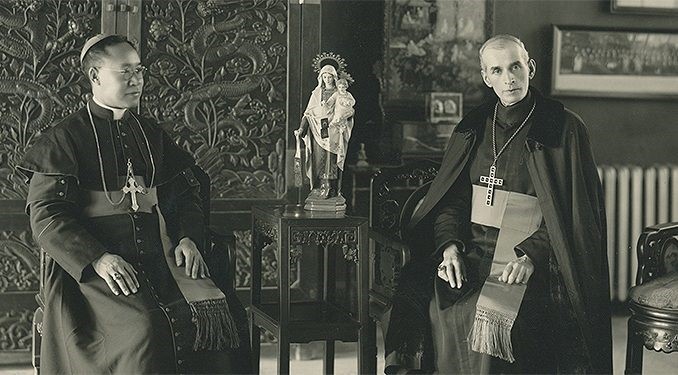China-Vatican Relations and History of Catholicism
China-Vatican Relations and History of Catholicism
Why in News?
Pope Francis recently urged prayers for Chinese Catholics, highlighting concerns about their communion with the Vatican, amid ongoing diplomatic tensions. This brings renewed focus on the complex history between the Holy See and Communist China since 1951, including recent developments in China-Vatican relations and the Vatican’s China policy.
Historical Roots of Catholicism in China:
- Catholicism, a significant aspect of China religion, was introduced in the 7th century via a monk named Aluoben during the Tang dynasty.
- Italian Jesuit Matteo Ricci (16th century) advanced the religion by embracing Chinese language and culture.
- The Taiping Rebellion (1850–64), partly inspired by Christianity, challenged the Qing dynasty.
- Mao Zedong’s regime viewed religion as a threat; severed Vatican ties in 1951 over espionage claims. This period marked the beginning of Catholic persecution in China.
- The Cultural Revolution further intensified the suppression of religious activities, including the Chinese Catholic Church.
- In 2018, China and the Vatican signed a deal known as the Sino-Vatican agreement, granting final say to the Pope on bishop appointments, sparking criticism and initiating a new phase in Vatican-Beijing negotiations.
Religious Freedom and State Control
- China recognizes five religions: Catholicism, Protestantism, Islam, Buddhism, and Taoism—all subject to Chinese government control through officially recognized religions and state-sanctioned churches.
- Article 36 of the Chinese Constitution allows religious freedom, with restrictions on foreign influence and public order, shaping the religious policy in China.
- Communist Party members are banned from religious affiliations.
- Catholics number ~10 million (2020) according to Chinese religious demographics, including many from underground Catholic churches, but the community is shrinking due to ongoing challenges and restrictions.
Geopolitics, Taiwan & Sinicisation Policy
- The Holy See still maintains diplomatic relations with Taiwan, unlike most nations due to China’s One-China policy. This complicates Hong Kong-China-Vatican relations.
- Only 12 countries recognize Taiwan; Vatican remains one of them, affecting Vatican-China relations and Vatican diplomacy efforts.
- Under Xi Jinping, religion is being “Sinicised”—integrated with Chinese socialist values, a process known as the Sinicisation of religion.
- There’s growing crackdown on religious groups, notably on Uighur Muslims in Xinjiang and others seen as foreign-influenced, raising concerns about religious freedom and Catholic persecution in China.
The ongoing Vatican-Beijing negotiations and the Vatican’s China strategy continue to evolve, with implications for the Chinese episcopate and the broader landscape of religious affairs in the country. The Chinese Catholic Patriotic Association plays a significant role in mediating between state control and religious practice. Meanwhile, underground Catholics face challenges as they navigate between their faith and the Chinese government’s religious restrictions.
The complex interplay between the Chinese Catholic Church, the Vatican’s diplomatic profile, and the Communist Party of China’s approach to religious policy continues to shape the future of Catholicism in the world’s most populous nation. As Pope Francis and Chinese leaders engage in dialogue, the fate of Chinese Catholic bishops and the broader Chinese Christian population remains a topic of international concern and diplomatic engagement.
The Vatican’s China policy, particularly regarding Pope bishop appointments, remains a crucial aspect of the ongoing negotiations. The Sino-Vatican agreement of 2018 marked a significant milestone in these relations, though it has been met with both hope and criticism from various quarters. As Vatican diplomacy continues to navigate the complex landscape of China religion, the future of the Chinese Catholic Church hangs in the balance, caught between the desires for religious freedom and the realities of Chinese government control.




